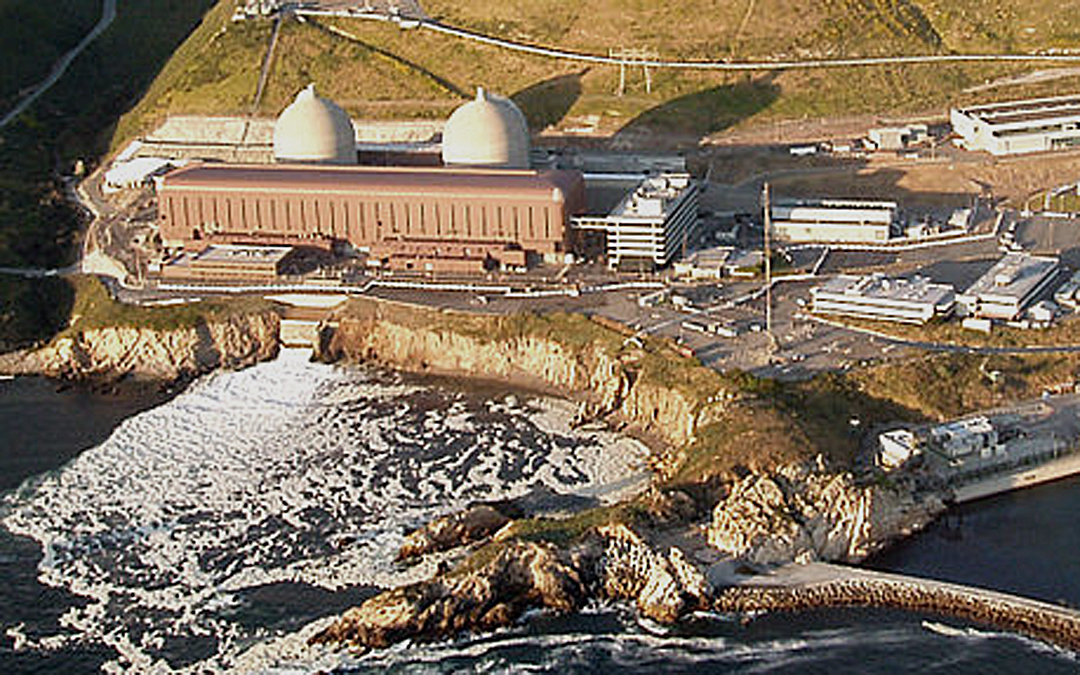
The big news today is that the former top Nuclear Regulatory Commission on-site inspector at the Diablo Canyon reactors, Michael Peck, has recommended to the NRC that those reactors be shut down until their ability to withstand earthquakes is fully assessed.
The weekend’s earthquake in the northern Bay Area of California just adds impetus to Peck’s position.
The irony is that this should have been the big news a year ago: Peck wrote his recommendation–in the form of a formal Differing Professional Opinion–in July 2013. And the NRC still hasn’t taken action, or even responded to it.
The problem is that there are several major earthquake faults around Diablo Canyon. And not only has our understanding of earthquakes evolved dramatically since construction of the first reactor at Diablo was authorized in 1968, but at least two major faults–the Hosgri and the Shoreline faults–hadn’t even been discovered then.
The Hosgri fault was discovered in the mid-1970s, the Shoreline–just 650 yards from the reactors–not until 2008.
According to the Associated Press, which broke the story today,
The NRC says the Hosgri fault line presents the greatest earthquake risk and that Diablo Canyon’s reactors can withstand the largest projected quake on it. In his analysis, Peck wrote that after officials learned of the Hosgri fault’s potential shaking power, the NRC never changed the requirements for the structural strength of many systems and components in the plant.
And the NRC has done only a preliminary assessment of the possible effects of the Shoreline fault.
Diablo’s owner, Pacific Gas & Electric, claims the reactors would withstand any possible earthquake from any of the faults, but given that this is the same utility that built the second unit at Diablo in a mirror image of its blueprints, it doesn’t hold a lot of credibility.
Peck, on the other hand, who still works for NRC but not at Diablo, does have credibility. In his opinion, which Friends of the Earth posted here, Peck writes,
The new seismic information resulted in a condition outside of the bounds of the existing Diablo Canyon design basis and safety analysis. Continued reactor operation outside the bounds of the NRC approved safety analyses challenges the presumption of nuclear safety.
Specifically, Peck says the existence of the Shoreline fault requires an amendment to Diablo Canyon’s operating license–along with the detailed analysis such an amendment would require:
Incorporating the Shoreline scenario into the FSARU [Final Safety Analysis Report Update] will require an amendment to the Diablo Canyon Operating License. A license amendment is required because the change results in more than a minimal increase in the likelihood of a malfunction of a structure, system, or component (SSC) important to safety than previously evaluated in the FSARU. A license amendment is also required because this change represents a departure from the FSARU method of evaluation used to establish the seismic SSE design basis. PG&E previously submitted a license amendment request to modify the plant design bases and safety analysis to accommodate the new seismic information. However, this request was not accepted by the NRC for review. The staff‘s conclusion of a “reasonable assurance of safety” does not provide an acceptable basis for not enforcing existing NRC quality assurance, safety analysis, and license requirements. The staff’s corrective action also failed to address the Los Osos and San Luis Bay faults. The new seismic information concluded that these faults were also capable of producing ground motions in excess of the current plant SSE design basis.
As for the Hosgri fault, Peck writes:
Neither the HE [Hosgri Evaluation] nor the LSTP [Long Term Seismic Program] contain design bases limits, conditions, or assumptions used in the bounding SSE [Safe Shutdown Earthquake] safety analysis. Comparison of the new ground motions only against the HE and LSTP failed to demonstrate that all plant technical specification required SSCs are capable of meeting the specified safety functions established at the higher ground motions….
While Peck writes in the usual NRC bureaucratic language, what he is saying can easily be summed up in plain English: The NRC does not know whether Diablo Canyon could survive an earthquake, within the realm of the possible, at any of the faults around Diablo Canyon. And the reactors should shut down until the NRC does know one way or the other. Of course, if the reactors cannot survive a postulated earthquake, the obvious conclusion is that they must close permanently.
The question is whether the NRC will ever act on Peck’s recommendation, or whether the agency will continue to sit on it until after the next earthquake.
Michael Mariotte
August 25, 2014
Permalink: https://www.nirs.org/2014/08/25/former-top-nrc-inspector-says-shut-diablo-canyon/
Please support GreenWorld with your tax-deductible contribution on our donation page here. We gratefully appreciate every donation of any size–your support is what makes this publication possible.
Comments are welcome on all GreenWorld posts! Say your piece above. Start a discussion. Don’t be shy; this blog is for you.
If you’d like to receive GreenWorld via e-mail, send your name and e-mail address to nirs@nirs.org and we’ll send you an invitation. Note that the invitation will come from a GreenWorld@wordpress.com address and not a nirs.org address, so watch for it.
If you like GreenWorld, you can help us reach more people. Just use the icons below to “like” our posts and to share them on the various social networking sites you use. And if you don’t like GreenWorld, please let us know that too. Send an e-mail with your comments/complaints/compliments to nirs@nirs.org. Thank you!
GreenWorld is crossposted on tumblr at https://www.tumblr.com/blog/nirsnet



